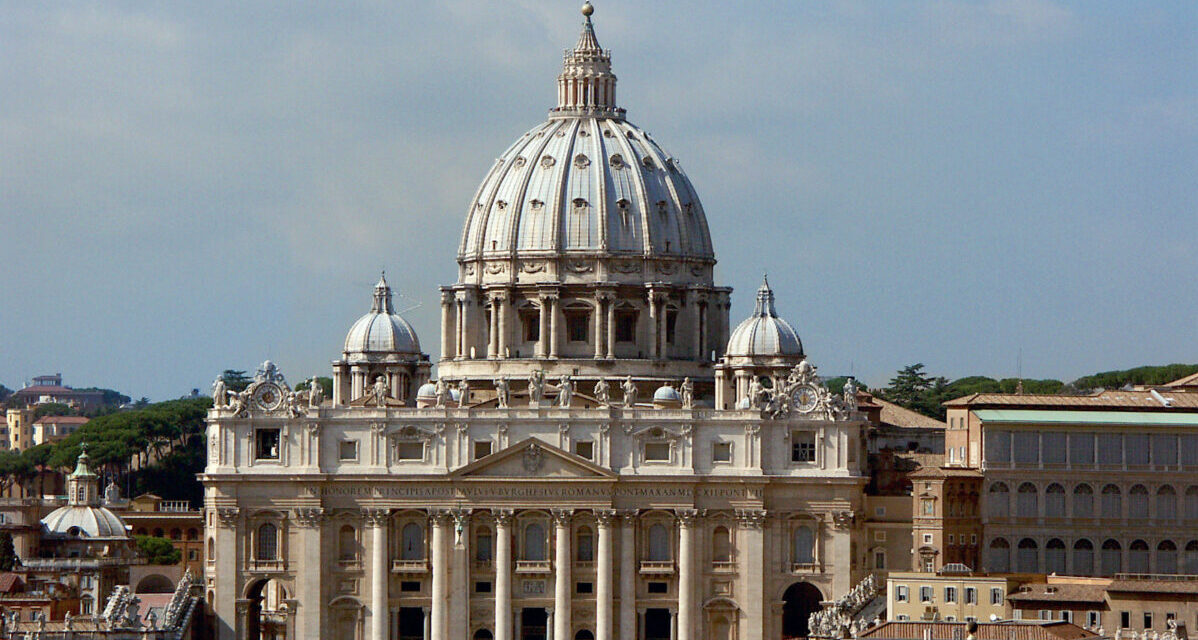Rome and the Vatican await the participants of the Hungarian national pilgrimage.
Everything is ready to welcome the nearly 1,500 Hungarian believers in Rome and the Vatican, who will take part in the national pilgrimage between April 23 and 25, and will be welcomed by Pope Francis, among others, said Norbert Németh, one of the organizers of the pilgrimage, the Pontifical Hungarian Institute rector on Thursday.
The Hungarian national pilgrimage will begin on the afternoon of April 23 with a celebratory mass, which will be led by András Veres, president of the Hungarian Catholic Bishops' Conference (MKPK), in the Basilica of St. John Lateran in Rome.
On the morning of April 24, Archbishop György Udvardy of Veszprém, vice president of the MKPK, will present a mass in the former St. Paul's Basilica outside the city walls.
The climax of the pilgrimage will be on April 25, when Pope Francis will receive the Hungarians at a private hearing. Afterwards, in St. Peter's Basilica, Cardinal Péter Erdő, Primate, Archbishop of Esztergom-Budapest will present the closing mass of the pilgrimage.
The Hungarian National Pilgrimage was announced by the MKPK as a thank you to Pope Francis last April 28-30. for his apostolic visit to Budapest between
Norbert Németh said that the pilgrimage to Rome has a nearly two-thousand-year-old tradition in the Christian world: pilgrims visit the basilicas that guard the tombs and relics of the two apostles, Saint Peter and Saint Paul. "These are the two focal points of the Hungarian national pilgrimage, we will present the Hungarian Mass at these locations," he emphasized.
He noted that the pilgrimage gives the participants the opportunity to "encounter God, each other and themselves in a new way." He sees that even today, pilgrimage means that "a person moves out of his comfort zone, he has to adapt, he has to pay attention to a different kind of rhythm and the call of God".
Norbert Németh, who heads the Rome organization of the pilgrimage, said that the entire territory of Hungary, almost every diocese, is represented. Seventeen archbishops and bishops accompany the faithful, Hungarian brothers and sisters also come from areas beyond the border, from the Highlands, Transylvania, and the South, while this is not possible from Subcarpathia due to the war.
Hungarians living in diaspora in various cities of Western Europe will not be missing either, and the community of Hungarians in Rome and the Hungarian Catholic mission in Italy will also be involved.
Pilgrims travel to Rome in groups and individually, by plane, bus and their own vehicles. "It doesn't matter who makes the trip and what. That's not what matters, the inner motivation, the inner journey that accompanies the pilgrimage, is much more important," stated Norbert Németh.
The rector of the Papal Hungarian Institute said that the program of the three-day pilgrimage was put together in such a way that each day would have a so-called climax, but there would be time left for guided visits to Rome in smaller groups, as well as the possibility of independent programs.
"When we organized the program, we were sure that the mass presented in St. Peter's Basilica would be the mission mass of the pilgrimage, because a good pilgrimage succeeds when one realizes at the end that the real pilgrimage is just beginning: all that I experienced and everything with which I became stronger and richer, I have to take home and continue my spiritual life with the light of this," emphasized Father Németh.
He explained that the largest Roman basilicas were chosen as the venue so that there would be no limit on the number of people. Thus, even in the last days, you can easily join the pilgrimage on the website of the Hungarian Catholic Mission in Italy or the MKPK.
The Hungarian national pilgrimage was last held in Rome in October 2000, which was the second It followed Pope John Paul II's previous visits to Hungary. Hungarian believers also came to the Vatican in large numbers in 1997 for the beatification of Bishop Vilmos Apor of Győr, and in 2003 for the beatification of doctor László Batthyány-Strattman.
MTI
Cover image: St. Peter's Basilica in the Vatican
Source: Wikipedia













